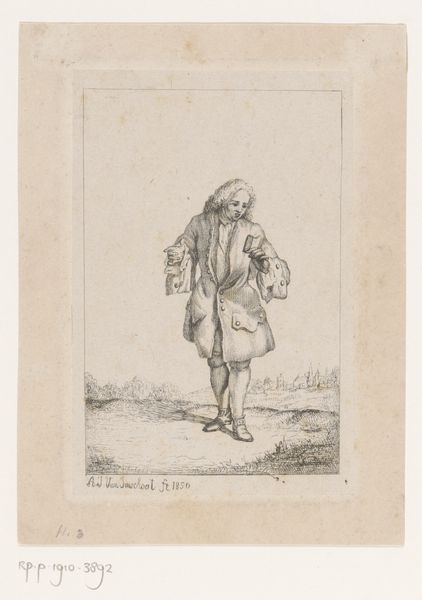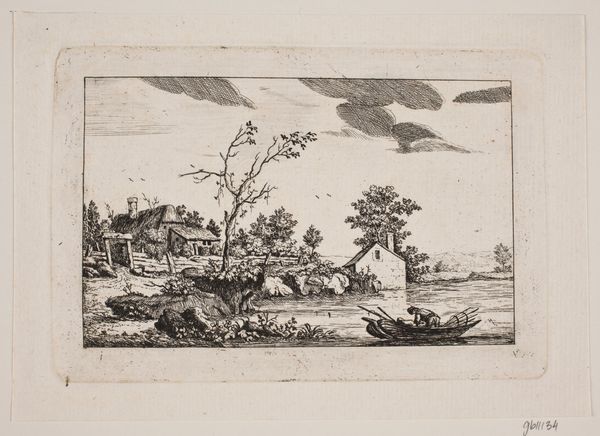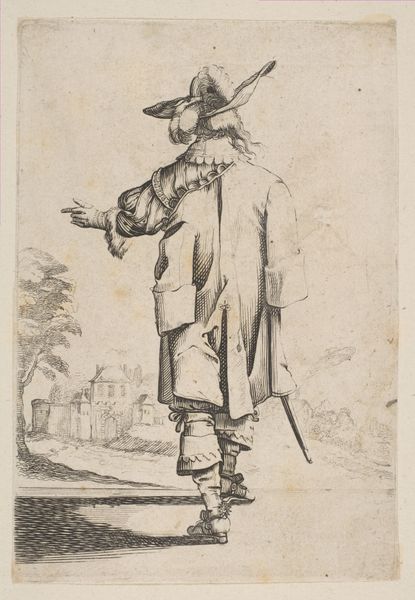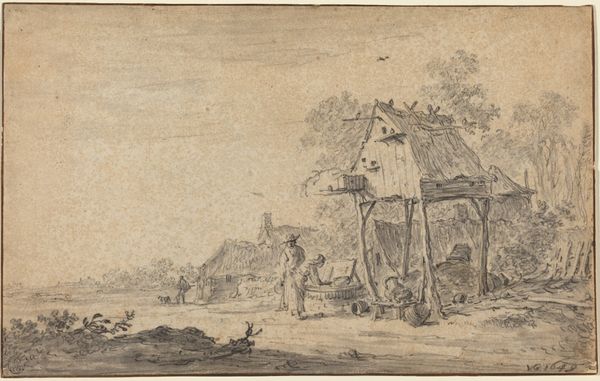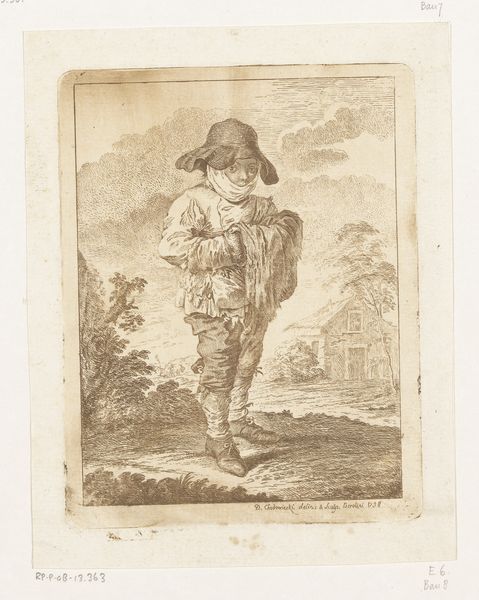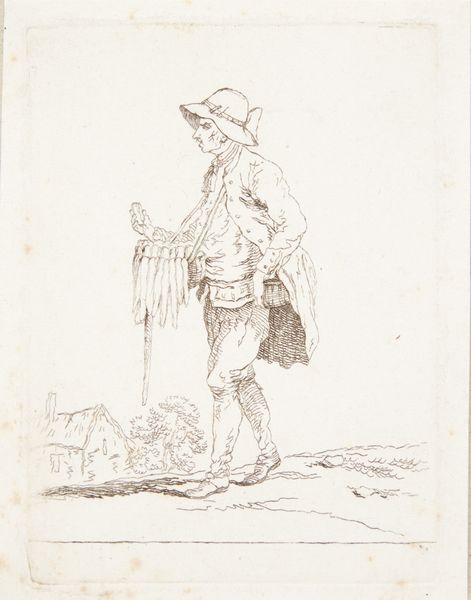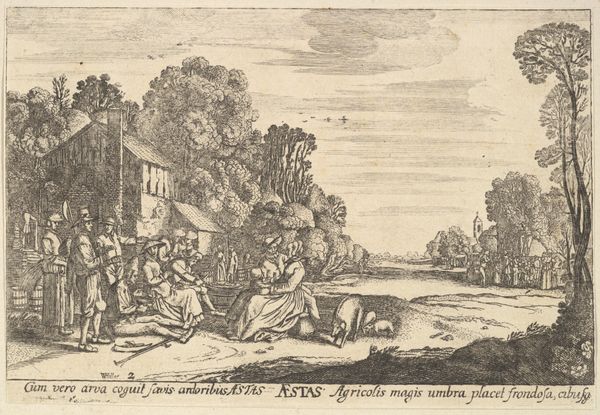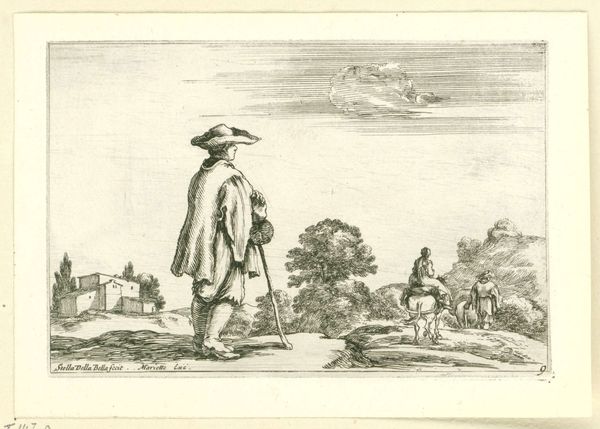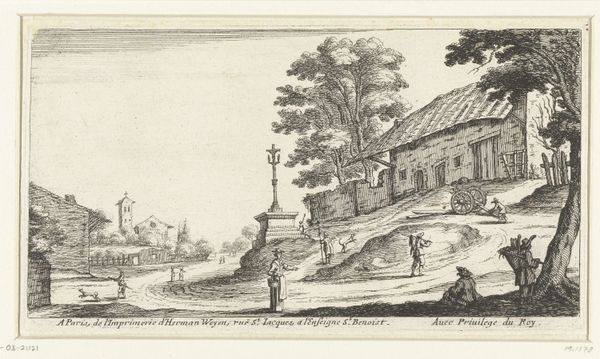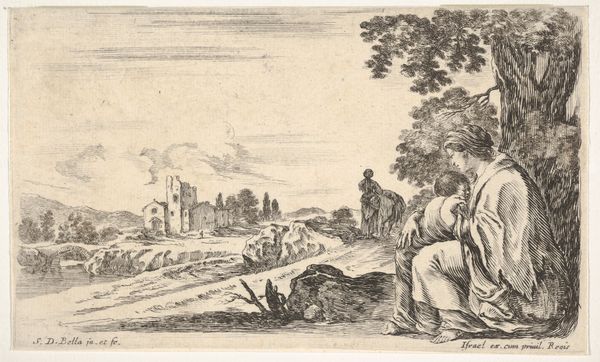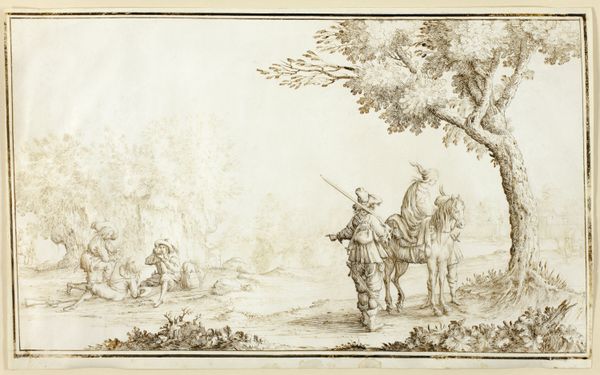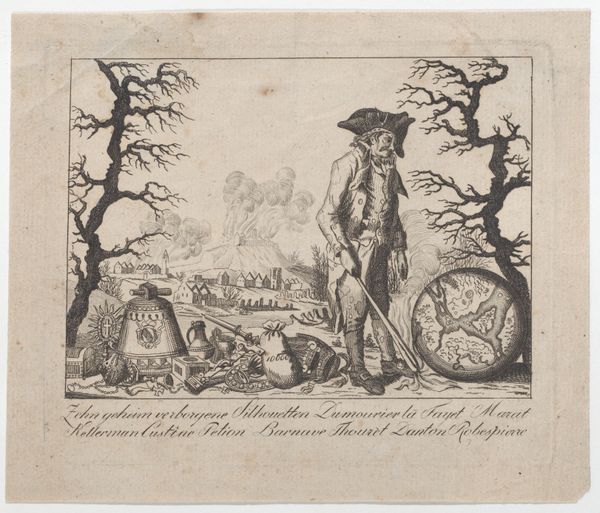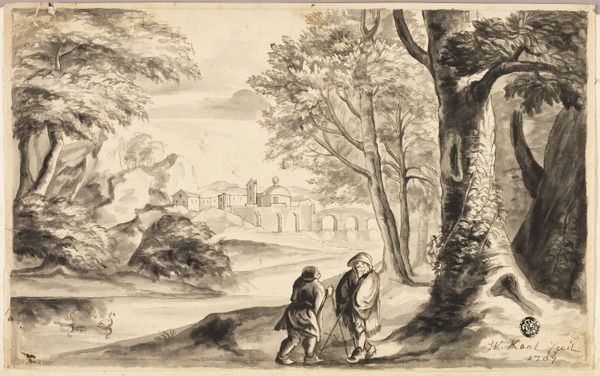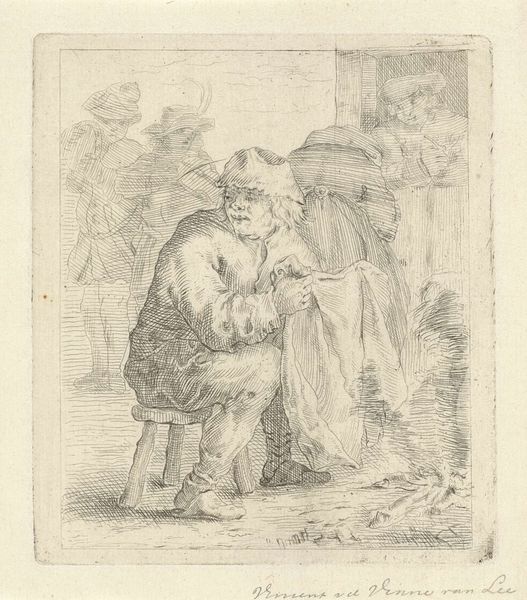
drawing, print, engraving
#
drawing
#
baroque
#
ink painting
# print
#
landscape
#
etching
#
charcoal drawing
#
line
#
watercolour illustration
#
genre-painting
#
engraving
Dimensions: 70 mm (height) x 100 mm (width) (None)
Curator: This is "En Bissekræmmer," created in 1758 by J.E. Keyserlingk. It's currently held at the SMK, the National Gallery of Denmark. We see what seems to be a peddler or itinerant salesman with his back to us. Editor: There's a haunting quietude to it, even in the small scale of the print. The stark lines, the limited details...it all speaks to a certain vulnerability and precarity. The buildings in the background have such distinct, if austere, characters of their own. It makes one wonder, where is he coming from, and what exactly is he selling? Curator: Indeed. The very fact that Keyserlingk chose this particular subject speaks to a societal recognition of these often-overlooked figures. Bissekræmmer means something along the lines of ‘petty tradesman,’ reflecting perhaps an entire stratum of transient labour in 18th-century Denmark. Notice the bag slung over his shoulder, its contents a mystery to us, yet holding his livelihood. Editor: And consider how that mystery might play into the anxieties of the time! Who is this person, wandering through our villages? What might they bring, or take? It certainly provokes class issues—who has, who hasn’t, and how does that impact perceptions? Are we supposed to sympathize with him, or view him with suspicion? Is he a bringer of progress or a nuisance? Curator: It also brings up questions about the cycle of goods. We see an economy of local artisans, each responsible for a small part, exchanging goods within a community, something that predates the sweeping impact of global supply chains we see today. There is a distinct symbolic echo of a now nearly vanished landscape of face-to-face, individual commerce, perhaps romanticized even as it was being drawn. Editor: Romanticized or scrutinized. Either way, an intimate window into a past both distant and subtly resonant. Even those bare trees feel symbolic, skeletal arms reaching up, asking questions about what we’ve left behind, what has grown, and at whose expense? Thank you for this chance to wander back in time and consider. Curator: A fascinating reminder of our interconnected histories. There is always more to find between those very spare, decisive etched lines, if only we are attentive.
Comments
No comments
Be the first to comment and join the conversation on the ultimate creative platform.
